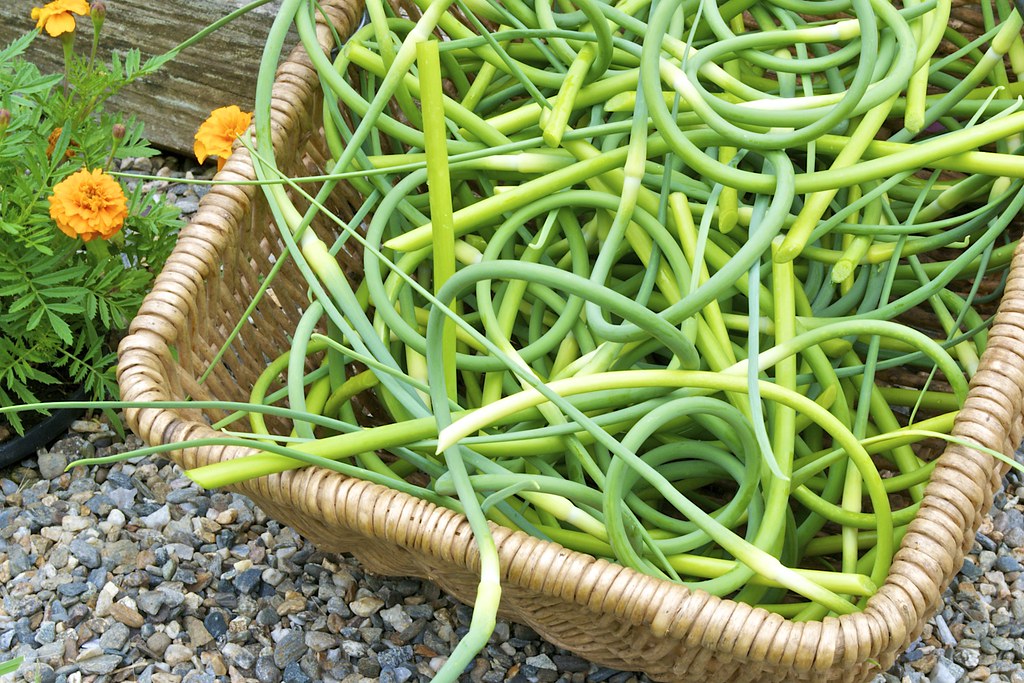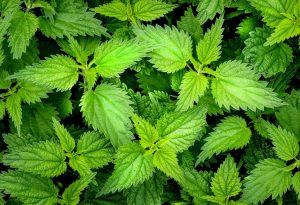Garlic scapes may not be known to everyone, but they are a delightful bonus that comes with growing garlic. These curly, green stalks shoot up from the garlic bulbs and are a sign that your garlic is ready to be harvested. If you’re curious about garlic scapes, how to harvest them, and what to do with them, you’re in the right place!
What Are Garlic Scapes?
Garlic scapes are the flower stalks that emerge from the garlic bulb as it matures. They are tender, green, and curled, resembling the shape of a curly onion or asparagus. Scapes are typically ready to harvest in late spring to early summer, depending on your garlic variety and local climate conditions. Harvesting them encourages the garlic plant to focus its energy on bulb development rather than flowering.
When to Harvest Garlic Scapes
The prime time to harvest garlic scapes is when they make a complete curl but before they begin to straighten out upwards. This is generally a few weeks before the main garlic bulbs are ready to be harvested. The exact timing can vary, but you can typically start checking for scapes in June.
Here are key indicators that scapes are ready for harvest:
The scapes have formed a full curl.
The color is vibrant green.
The scapes feel firm to the touch and not too tough or woody.
How to Harvest Garlic Scapes
You’ll need a few basic tools for harvesting garlic scapes: a sharp pair of garden scissors or shears, and perhaps a basket to collect the scapes.
Step-by-Step Harvesting Guide
Identify the Scapes: Look for the curly green stems emerging from the garlic plants.
Prepare Your Tools: Make sure your scissors or shears are clean and sharp to avoid damaging the plant.
Cut the Scapes: Grab each scape just below the curl and cut it off cleanly at the base, being careful not to cut into the garlic bulb or damage neighboring plants.
Collect and Store: Place the harvested scapes into your basket. If not using immediately, keep them in a cool, dry place. They can last for a week or more in the fridge.
What to Do with Garlic Scapes
The fun doesn’t end with harvesting! Garlic scapes are versatile and can be used in a variety of culinary creations. Here are some suggestions:
Pesto: Use garlic scapes in place of basil to make a unique pesto sauce. Blend scapes with nuts, Parmesan cheese, olive oil, and lemon juice for a vibrant spread.
Stir-Fries: Chop scapes into bite-sized pieces and add them to your stir-fries for a mild garlic flavor.
Soups and Sauces: Incorporate chopped scapes into soups or sauces for flavor and texture. They sauté beautifully and can enhance your dishes with their subtle garlic taste.
Grilled or Roasted: Toss whole scapes with a bit of olive oil, salt, and pepper, then grill or roast them until they are tender. This makes for a delicious side dish or addition to salads.
Pickled: For a unique treat, try pickling garlic scapes. They make a great snack and a tangy addition to charcuterie boards.
Storing Garlic Scapes
If you find yourself with an abundance of garlic scapes, here’s how to store them:
Refrigerator: Place scapes in a plastic bag or wrap them in a damp paper towel inside a plastic bag. They will keep fresh in the fridge for about one to two weeks.
Freezing: For longer-term storage, chop scapes and freeze them in an airtight container. This will allow you to enjoy them even after the growing season ends.
Drying: While less common, drying garlic scapes is an option. Use a dehydrator or an oven set on low to dry them out completely before storing in an airtight jar.
Conclusion
Harvesting garlic scapes is a rewarding part of growing garlic that can elevate your meals and add a burst of flavor to your cooking. Whether you’re a seasoned gardener or just starting out, these tender green stalks offer a special treat that shouldn’t be overlooked. So, plant some garlic, keep an eye out for those scapes, and enjoy the culinary possibilities they bring to your kitchen!





